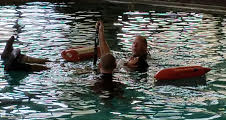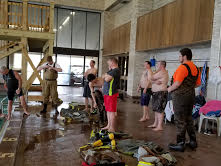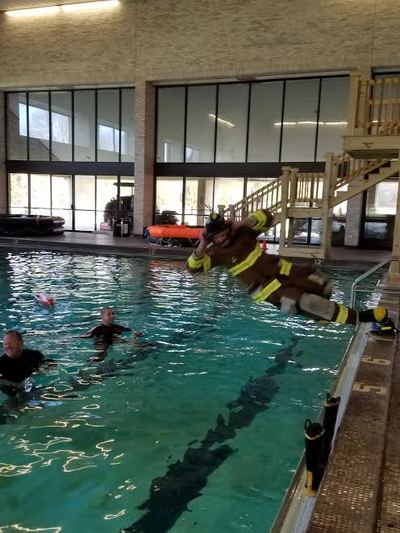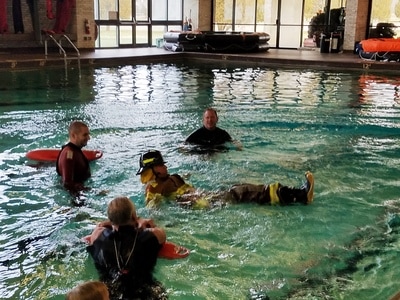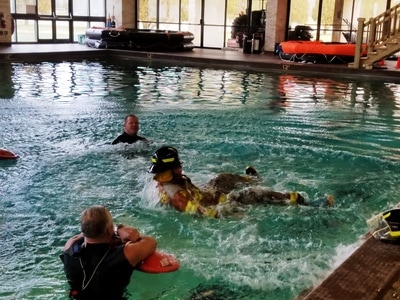Thank you to Winterfest '17, the Maryland Institute for Emergency Medical Services Systems (MIEMSS) and the Calhoon M.E.B.A. Engineering School for sponsoring this premier program
Course Description:
This course literally immerses the students in practical exercises that are designed to enhance their safety, survival and rescue capabilities in the aquatic environment. A variety of scenario-based evolutions are performed in a controlled water environment that challenge the students to put newly learned techniques and tactics into practice.
Purpose:
Open-Water environments pose a substantial risk to public safety personnel working at emergency and non-emergency incident scenes. Education and Training on responder safety and survival in the aquatic environment are paramount to protect the emergency personnel while working on, around, or in the water; preventing personnel injuries and fatalities.
Scope:
The First-Due response district for many Departments in the State is comprised of several square miles of shoreline. Consequently, the probability of Emergency personnel working on, in, or near the aquatic environment is extremely high.
Training Format:
This training is designed to be presented in a blended format that includes brief lecture, demonstration, and Hands-On elements. In-water training will be conducted in a controlled environment (swimming pool) with a ratio of Instructors/Safety Personnel to Students, that maximizes participant safety and enhances the training/educational experience.
This course literally immerses the students in practical exercises that are designed to enhance their safety, survival and rescue capabilities in the aquatic environment. A variety of scenario-based evolutions are performed in a controlled water environment that challenge the students to put newly learned techniques and tactics into practice.
Purpose:
Open-Water environments pose a substantial risk to public safety personnel working at emergency and non-emergency incident scenes. Education and Training on responder safety and survival in the aquatic environment are paramount to protect the emergency personnel while working on, around, or in the water; preventing personnel injuries and fatalities.
Scope:
The First-Due response district for many Departments in the State is comprised of several square miles of shoreline. Consequently, the probability of Emergency personnel working on, in, or near the aquatic environment is extremely high.
Training Format:
This training is designed to be presented in a blended format that includes brief lecture, demonstration, and Hands-On elements. In-water training will be conducted in a controlled environment (swimming pool) with a ratio of Instructors/Safety Personnel to Students, that maximizes participant safety and enhances the training/educational experience.
